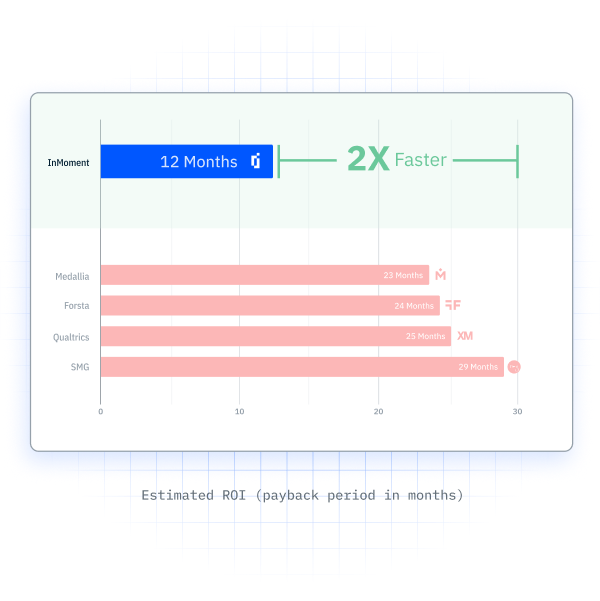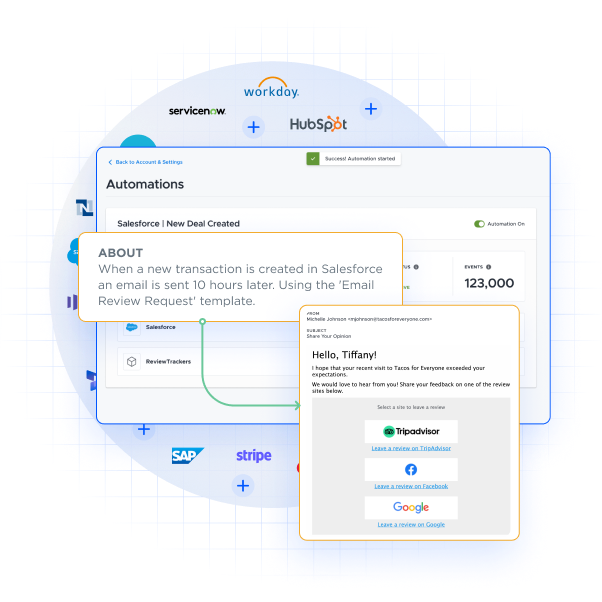Analytics and Insights Teams Build the Foundation for Data-Driven Success
Analytics teams serve as the backbone of modern data-driven organizations, bringing together and transforming mass amounts of raw data into actionable insights that drive strategic decision-making. The structure, skills, and organizational placement of this function significantly impact an organization's ability to compete and innovate in today's business environment.
Did you know that 88% of organizations plan to moderately or extensively increase their investment in technologies related to data operations over the next year?
This trend highlights the increase in the amount of data generated by organizations. But, while technology platforms and data infrastructure receive significant attention and investment, it’s the human element that often determines whether data initiatives succeed or fail. Analytics teams bridge the critical gap between raw data and business impact, ensuring that companies’ data investments deliver tangible results.
What Is an Analytics Team?
An analytics team is responsible for collecting, processing, analyzing, and interpreting data to support organizational decision-making and strategic initiatives. These teams combine technical expertise with business acumen to transform complex datasets into clear, actionable insights that drive organizational success.
These teams operate at the intersection of technology and business strategy. They often serve multiple organizational stakeholders, from executive leadership seeking strategic insights to operational managers requiring performance metrics and frontline employees needing real-time information on daily work.
Analytics teams have evolved significantly from their origins in business intelligence and reporting. Today’s teams encompass a broader range of capabilities, including predictive modeling, machine learning, statistical analysis, data visualization, and strategic consulting.
The scope of this function varies considerably; some teams focus on specific business functions like customer experience analytics or financial planning, while others operate as enterprise-wide centers of excellence serving multiple departments. Regardless of scope, effective analytics employees share common characteristics: deep technical capabilities, an intimate understanding of business context, and expertise in communicating complex findings to diverse audiences.
What Does an Analytics Team Do?
Analytics teams perform a wide range of functions that can be organized into several key categories: data management and preparation, analysis and modeling, insight generation and communication, and strategic consultation.
Data Management and Preparation
This is the foundation of analytics work. Analytics teams spend significant time ensuring data quality, integrating information from multiple sources, and creating reliable datasets for analysis. By establishing data governance protocols, implementing quality control measures, and maintaining documentation for consistent, repeatable analyses, they ensure the reliability and accuracy of all subsequent insights.
Analysis and Modeling
Understanding and presenting data represents the core technical work. Professionals apply statistical methods, machine learning algorithms, and business intelligence tools to identify patterns, trends, and relationships within data. This work ranges from descriptive analytics that explain what happened, to predictive models that can forecast future outcomes, and prescriptive analytics that recommend key actions.
Insight Generation and Communication
One of the most crucial functions of analytics teams is their ability to transform technical findings into business-relevant information. Teams create reports, dashboards such as a customer experience dashboard, and presentations that make complex data accessible to non-technical stakeholders. This function requires a deep understanding of audience needs, visual design capabilities, and strong storytelling skills.
Strategic Consultation
These teams also serve as internal advisors who help business leaders make more informed decisions. Teams provide guidance on measurement strategies, help design experiments and pilots, and offer business recommendations based on their findings. This consultative role requires analytics professionals to understand the business strategy, industry dynamics, and organizational culture in addition to their technical expertise.
Where Does Analytics & Insights Sit in an Organization?
The organizational placement of these teams significantly impacts their effectiveness, influence, and ability to showcase value. Organizations adopt various models — each with distinct advantages and challenges — that align with different business contexts and objectives.
Centralized Models
The centralized model positions analytics teams as shared services organizations that support multiple business units. This approach enables economies of scale, consistent methodologies, and deep technical specialization. Centralized teams can invest in advanced tools and capabilities that might be cost-prohibitive for individual departments. They also facilitate knowledge sharing and best practice development across the enterprise. However, centralized teams may struggle to develop deep domain expertise in specific business areas and can become disconnected from day-to-day operational needs.
Decentralized Models
On the other hand, decentralized models embed analytics professionals directly within business units, enabling close collaboration with operational teams and deep understanding of specific business challenges. This structure promotes faster decision-making and ensures analytical work directly supports business priorities. Embedded analysts develop strong relationships with business stakeholders and can respond quickly to emerging needs. The main drawbacks include potential duplication of capabilities, inconsistent methodologies across the organization, and difficulty achieving economies of scale in tools and infrastructure.
Federated Models
This model combines elements of both centralized and decentralized approaches. These structures typically maintain a central analytics team that provides enterprise-wide capabilities, standards, and infrastructure while also embedding analytics professionals within business units. The central team focuses on advanced capabilities, tool standardization, and knowledge sharing, while embedded analysts handle business-specific requirements and stakeholder relationships. This hybrid approach seeks to capture the benefits of both models while minimizing their respective limitations.
Who Should the Analytics Team Report To?
Reporting varies considerably across organizations and significantly influences team effectiveness. Each reporting relationship shapes team priorities, resource allocation, and organizational influence. Analytics teams report to a variety of stakeholders, most commonly:
- Chief Executive Officer (CEO)
- Chief Operating Officer (COO)
- Chief Marketing Officer (CMO)
- Chief Technology Officer (CTO)
- Chief Data Officer (CDO)
Teams reporting to technology leadership often excel at technical capabilities and infrastructure development but may struggle to influence business strategy. Those reporting to business leaders typically maintain strong stakeholder relationships and business alignment but might face challenges accessing technical resources or developing advanced capabilities. Direct reporting to executive leadership provides maximum organizational influence but can create unrealistic expectations and political challenges.
Industry Considerations
The industry an organization operates in can also influence optimal organizational structures. Financial services organizations often embed analytics teams within specific business lines due to regulatory requirements and specialized domain knowledge needs. Technology companies may favor centralized models that support platform development and product analytics. Retail organizations frequently adopt federated approaches that balance enterprise-wide customer insights with category-specific analytics.
Organizational Maturity
The maturity of an organization also affects the most appropriate structure for analytics teams. Early-stage analytics organizations often benefit from centralized models that build foundational capabilities and establish consistent practices. As organizations mature, they may transition toward federated models that provide both enterprise capabilities and business-specific support. Highly mature organizations sometimes adopt decentralized models when analytics capabilities become deeply embedded throughout the business.
The optimal organizational structure depends on factors including company size, industry requirements, business strategy, and existing organizational culture. Successful organizations regularly evaluate and adjust their analytics team structure as their capabilities, needs, and strategic priorities evolve.
Job Skills for Data and Analytics Employees
Success in analytics roles requires a unique combination of technical expertise, business acumen, and interpersonal skills. The specific mix varies by role and seniority level, but several core competencies appear across most positions.
Technical Proficiency
This is the foundation of analytics work. Analytics professionals must master statistical methods, programming languages, and analytical tools relevant to their role. This includes proficiency in languages like SQL, Python, or R for data manipulation and analysis, familiarity with business intelligence platforms for reporting and visualization, and understanding of database technologies and data architecture principles. Machine learning and artificial intelligence capabilities are increasingly important as organizations seek to automate insights and predictions.
Business Understanding
In order to be successful, analytics professionals need to have a clear understanding of the business. Team members must understand how their organization creates value, serves customers, and competes in the market. This business context enables them to identify relevant analytical questions, interpret findings accurately, and recommend actionable solutions. Industry knowledge, competitive intelligence, and financial literacy all contribute to this business foundation.
Communication and Storytelling
Communication skills enable analytics professionals to translate technical findings into compelling business narratives. This includes data visualization capabilities, presentation skills, and the ability to adapt communication style to different audiences. The best analytics professionals can explain complex statistical concepts to executives, provide detailed technical guidance to peers, and create self-explanatory dashboards for operational users.
Problem-Solving and Critical Thinking
The ability to problem solve helps analytics professionals navigate ambiguous business challenges and complex datasets. They must formulate appropriate analytical approaches, identify potential biases or limitations in their analysis, and develop creative solutions when standard methods prove insufficient. Intellectual curiosity and attention to detail are essential traits that support rigorous analytical work.
Collaboration and Relationship Building
Continuous collaboration enables analytics professionals to work effectively across organizational boundaries. They must partner with business stakeholders to understand requirements, collaborate with IT teams to access data and deploy solutions, and coordinate with other analytics professionals on complex projects. Change management capabilities help them drive adoption of new insights and analytical processes.
Emerging competencies reflect the evolving nature of this work. Data ethics and privacy knowledge has become increasingly important, agile project management ensures quick response time to changing needs, and understanding emerging technology like AI, cloud computing, and real-time analytics expands potential impact. The specific skill requirements vary significantly across different analytics roles. Data engineers focus heavily on technical skills related to data infrastructure and processing. Data scientists emphasize statistical modeling and machine learning capabilities. Business analysts prioritize business understanding and communication skills. Data architects require deep technical knowledge of database technologies and system design principles.
Building Analytics Excellence with InMoment
Establishing effective analytics teams requires more than organizational design—it demands the right technology foundation to support sophisticated analysis and insight generation. InMoment’s integrated experience intelligence platform enables analytics teams to excel by providing comprehensive data collection, advanced analytical capabilities, and intuitive insight delivery tools.
InMoment’s platform addresses common analytics team challenges by connecting disparate data sources, automating routine analysis tasks, and enabling real-time insight delivery. This technological foundation allows analytics professionals to focus on high-value strategic work rather than manual data preparation and basic reporting.

With InMoment’s proven track record of delivering ROI in just 12 months—twice as fast as industry averages—analytics teams can demonstrate immediate business value while building long-term organizational capabilities. To discover how InMoment can accelerate your analytics team’s impact, schedule a demo today.
References
boomi. The State of DataOps: Unleashing the Power of Data. (https://boomi.com/content/ebook/esg-state-of-data-ops/). Accessed 6/24/2025.

































